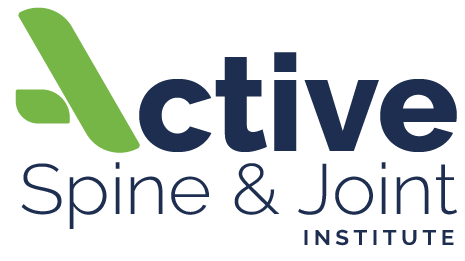Why Consistency is Key to Lasting Pain Relief
Pain can turn your world upside down, leaving you feeling stuck, frustrated, and desperate for relief. When you seek treatment, it's natural to want results fast. And while some patients see improvements after just one or two sessions, the journey to lasting pain relief is often a slow and steady climb, not an instant turnaround.
In managing chronic joint pain, there's a crucial principle: consistency. It's the key to unlocking the full benefits of treatments like spinal decompression and pulse wave therapy, as well occuatptional therapy. While many of our patients experience noticeable relief after just a couple of sessions, achieving lasting results takes time and commitment.
The Long-Term Vision: What It Takes to Heal
In our experience, the majority of patients notice a positive difference within the first few treatments. It's exciting to feel your body responding, but it's not the finish line—it's just the beginning. For some, noticeable changes might not happen until visit 9 or 10, and that's perfectly normal. Every person’s body responds differently, and just because you don't immediately feel the progress doesn't mean it's not happening. Underneath the surface, your body is rebuilding, recalibrating, and healing.
Spinal decompression and pulse wave therapy are powerful tools in our arsenal against chronic pain. They work by addressing the root causes of discomfort—whether it's a herniated disc, nerve impingement, or other musculoskeletal issues. But like most effective treatments, they need to be applied consistently over time to yield optimal results.
Many patients come to us hoping for a quick fix, and while we often see significant improvements after a session or two, that's just the beginning. Spinal decompression involves gently stretching the spine to relieve pressure on discs and nerves, promoting the body's natural healing processes. Pulse wave therapy uses acoustic waves to stimulate blood flow, break down scar tissue, and accelerate healing. These are complex processes that require time to reach their full potential.
Think of it like building a house. You can't just lay the foundation and expect it to be ready for move-in the next day. The same logic applies to your treatment plan. Completing the entire program ensures a strong foundation for pain relief and improved mobility. Stopping halfway could lead to setbacks, increased discomfort, or even a return to square one. No one wants that.
Why so many sessions?
You might wonder why we recommend 18 to 24 sessions for maximum benefit. It's a valid question, especially when the first few sessions might already be offering relief. The answer is simple: we aim for long-term stability, not just short-term symptom relief. Research and clinical experience have shown that this range of sessions provides the best outcomes for most patients. Here's why:
Progressive Healing: Just like building muscle requires consistent training, healing from chronic pain requires repeated stimulation and therapy. Each session builds on the previous one, creating a cumulative effect that leads to greater improvement over time.
Preventing Relapse: Stopping treatment prematurely can lead to a relapse. You might feel better after a few sessions, but the underlying issues might not be fully resolved. Completing the full course of treatment reduces the risk of setbacks and ensures a more stable recovery.
Customized Care: Each patient is unique, and our team tailors the treatment plan to your specific needs. While 18 to 24 sessions is the general recommendation, some patients may need more or fewer sessions depending on their progress. By following through with the full plan, you're giving your body the best chance to heal completely.
You might wonder why we recommend 18 to 24 sessions for maximum benefit. It's a valid question, especially when the first few sessions might already be offering relief. The answer is simple: we aim for long-term stability, not just short-term symptom relief. Research and clinical experience have shown that this range of sessions provides the best outcomes for most patients. Here's why:
That's why our recommended treatment plan involves 18 to 24 sessions. This might seem like a lot, but it's designed to ensure that you get the long-term relief you deserve. Remember, it's not just about feeling better for a day or two—it's about healing and preventing the pain from returning. Skipping sessions or stopping early might offer temporary relief, but it often leads to relapses and prolonged suffering.
Don't Stop Halfway—Consistency is Key
Think of your treatment plan like a marathon, not a sprint. You wouldn't run halfway and expect to cross the finish line, right? It's the same with spinal decompression and pulse wave therapy. Stopping halfway through could lead to setbacks, increased discomfort, and a return to where you started. No one wants that.
Now, here's what you need to do: Pick up the phone and call us at 609-886-8585 to schedule your next appointment. Lock in your sessions to stay on track. If you already have appointments, that's great! Just make sure you're showing up and putting in the work. Your future self will thank you.
We're here to help you see this through. We know you can do this, and we want to make sure you finish the program and get back to living your life without pain holding you back. Don't let the pain win—commit to the process, stay consistent, and let us guide you to lasting relief.
P.S. Don't wait to schedule. The longer you put it off, the harder it is to get back on track. Call us at 609-886-8585 now, and let's get you moving toward a pain-free life.
